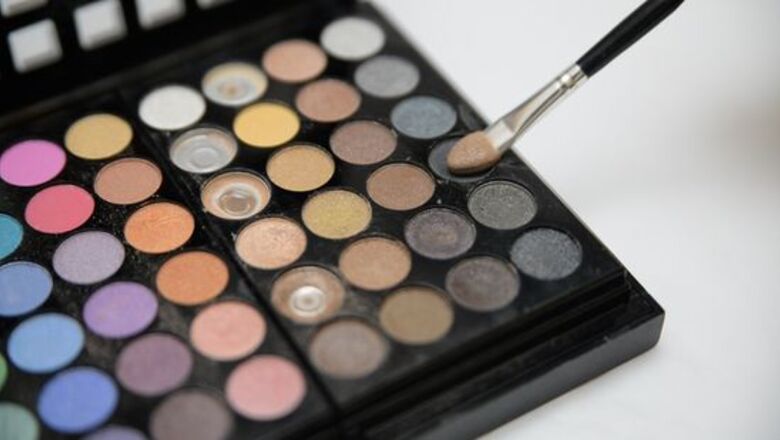
views
Choosing the Right Eyeliner
Use an eyeliner pencil. The most common method for applying eyeliner is by using an eyeliner pencil. These pencils have soft, malleable points that draw on smoothly and have a rich, dark, creamy color. Eyeliner pencils are easy to come by and can be purchased in most drug stores or supermarkets in the personal hygiene section. They come in multiple colors and shades, but black is standard and is the most masculine. Pencil eyeliner is softer and more malleable, and it blends more easily than other products. Remember, your pencil tip should be firm enough that it doesn't crumble on you, but soft enough that the eyeliner still glides on smoothly. Run the tip of a new eyeliner pencil over the soft part of your palm a few times before you begin applying it to your eyelid. This will blunt the tip somewhat so that it doesn’t poke or scratch.
Try liquid eyeliner. Rather than a soft pencil-lead type point, liquid eyeliners go on wet using a thin brush tip that lets you trace precise lines, then dries around the eye. A liquid eyeliner can make darker, sharper, and more dramatic lines. It's difficult to make liquid lines look even, though, so you may want to practice with it for awhile before wearing it out. It can be tough to draw on thin, straight lines using a liquid eyeliner, but you'll get the hang of it with practice! Liquid eyeliner can give you a sharper line than pencil, especially if you have any texture on your eyelids, like crepey skin or wrinkles.
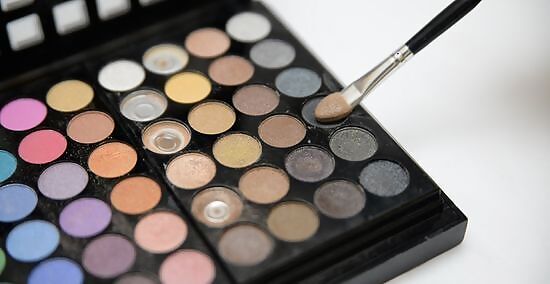
Substitute a dark eyeshadow for eyeliner. Instead of using an eyeliner, you can use a darker shade of eyeshadow along with a damp angle brush. Load the brush with the shadow, then draw on your line just as you would with a liquid or gel product. Eyeshadow is more forgiving, especially for beginners, and can create a softer edge. Black eyeshadow will work for this, but other colors can give you different effects. A gray shadow will give the same sultry look while being a little less harsh, while brown might look a bit more natural. Experiment to find what works for you.
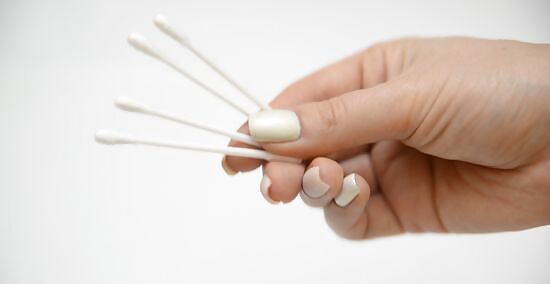
Buy a cosmetic brush or some cotton swabs. An angle brush, chisel brush, or any similar thin, soft cosmetic brush can be used to soften the edges of the eyeliner after it’s been applied. A simple cotton swab will also do, although the fluffy texture of the cotton might smear the eyeliner too much and make a mess. While not a necessity, a makeup brush or cotton swab can soften lines for a more natural contour around the eye for those who don’t want that hard-edged look. Small sweeps of a makeup brush will blend the hard edges of the eyeliner. Cotton swabs with pointed tips are better than rounded ones for blending out your eyeliner.
Lining the Lids
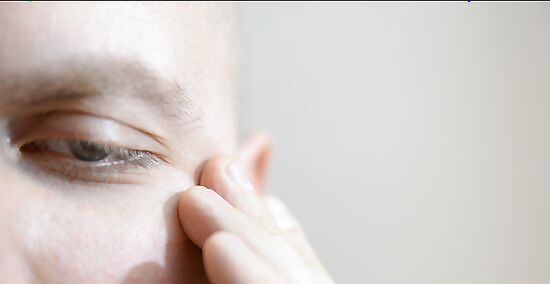
Pull your lower lid taut. You’ll be lining the upper and lower lids separately. It’s usually easier to begin with the lower lid because your vision won’t be obstructed by your drawing hand. Use a finger at the outer edge of the eyelid to pull the lid taut; this will allow you to draw straighter lines without accidentally moving the eyelid. Pull the lid slightly downward so that you can start the line close to the inner eyelid to avoid creating gaps.
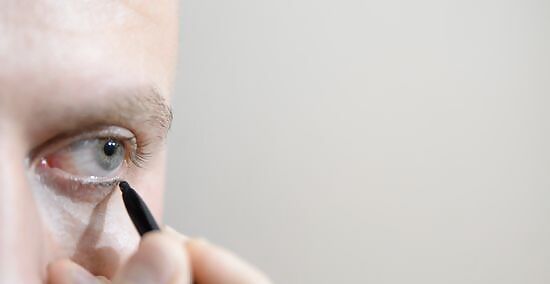
Run the eyeliner pencil along the edge of the lower lid. Carefully place the point of the eyeliner pencil or brush just below the lower eyelash line and make short, linear strokes from the inner edge of the eye outward. Keep the lines as close to the inner eyelid as you can and try not to overlap. Go over the lines a few times from one side of the lid to the other until you achieve the desired style and thickness. Go slowly, even if you’re used to putting on guyliner. You’re working very close to the surface of the eye, so you don’t want to make a mistake.
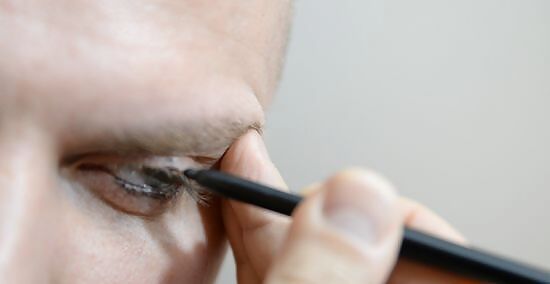
Do the same for the upper lid. Place a finger just below your eyebrow and pull the upper eyelid up and across. Once again, line the lid from the inner edge out, staying along the area just above the eyelashes. Go slowly and make sure you’ve got a good view of the eyelid and pencil in the mirror. Since the upper eyelid is thinner than the lower one, it’s easier to slip.
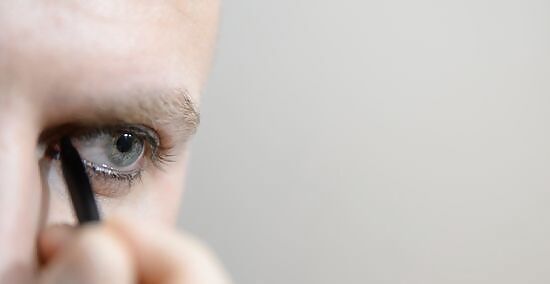
Touch up the outer corner of the eye. Now that you’ve lined the upper and lower eyelids, use a few small strokes to fill in the space in the outer corner of the eye and connect the lines. This will give the eye a one-piece ringed look. Don’t fill in the inner corner of the eye—this is where the tear ducts are, and eyeliner that gets into these crevices can run and sting, causing a buildup of sticky black eye boogers and possibly even leading to infection. Try not to “color in” the outer corner of the eye. This can end up looking more like a black eye than an expressive accent. Instead, line the upper and lower lids and go around the outer corner lightly, just enough to keep the lines from looking disjointed.
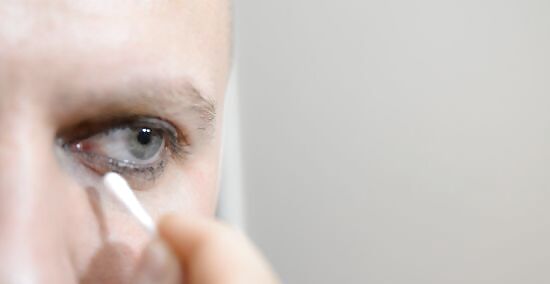
Smooth the lines. Using the chisel brush or a damp cotton swab, go over the eyeliner with a sweeping motion to blend and soften the edges. You can also leave eyeliner as-is once you’ve drawn it on, but it will have a sharper, more jagged look, and any small mistakes you’ve made in the lines will be more noticeable. If you’ve drawn the eyeliner on thicker than you’d like or smeared it while smoothing, use a wet paper towel to wipe the area.
Trying Out New Looks
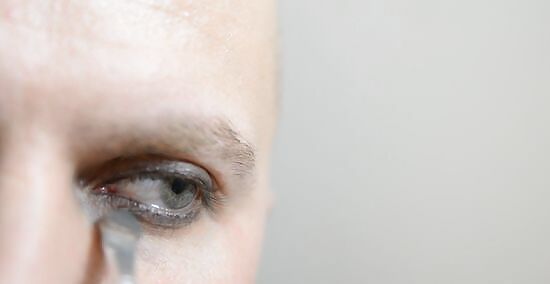
Smudge the eyeliner. Some proponents of guyliner, like Gerard Way of My Chemical Romance, prefer a deliberately smudged, messy look to their eyeliner. To accomplish this, apply the eyeliner thickly and then use a brush, cotton swab or the point of your finger to smudge it around and outward from your eye. Add more eyeliner as needed until you’re able to create the effect you’re after.
Draw on a "winged" edge. Rather than simply penciling around the lash line, a winged liner can be used to add new dimensions to the shape of the eye. This technique will be useful in crafting a more theatrical look for themed dress, costume or the stage. Fold one corner of a small strip of tape over on itself and stick the tape on just under the lower eyelid. Then, line the eye as your normally would, but finish by drawing a short line from the outer edge of the eye to the tape and filling in the angular space it creates. You'll be left with an exotic flourish that provides an interesting alternative to regular contoured lining. Liquid liner is typically best for creating winged or cat-eye looks. Any type of tape will be sufficient for stenciling around the underside of the eye, but a softer tape with a weaker adhesive, such as masking or surgical tape, will probably work best as it won't cause irritation or discomfort once it's peeled off. Be careful not to make the "wing" too large, or it may end up looking cartoonish.
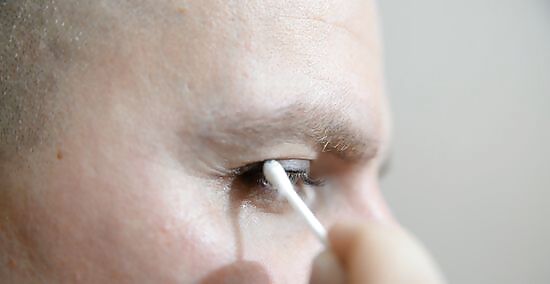
Line just one lid. This is a less common approach, but one sometimes taken by Johnny Depp, Russell Brand and Billie Joe Armstrong of Green Day. Lightly line only the upper or lower eyelid, or apply it partially to just the outer edge of the eye. Partial lining can bring out your eyes and lend a dark, mysterious aesthetic without requiring you to encircle the whole eye. Because you’re going for a sleek, minimal eye effect, it will probably be easier to partially line using a pencil.
Go with a different shade. While black is the popular choice for guyliner enthusiasts, it’s not your only option. Stick with a masculine color palette, but take a look at different gradients of black and more natural flesh tones. A charcoal eyeliner or one a few shades deeper than your own skin tone can highlight your eyes as well as a black one and not be quite as starkly obvious. Weigh your options and decide on a product that you like and that complements the look you’re trying to create. Try out a few different brands and styles of eyeliner until you find the right consistency and shade. Kevyn Aucoin Kevyn Aucoin, Make-Up Artist For a subtle, work-appropriate look, use brown or grey liner, applying only to the outer third of the eyes. Take an eyeliner brush dipped in powder shadow to softly define the rest. Pencil liners in dark colors work for evening drama, but avoid liquid liner, which rarely appears natural on men.




















Comments
0 comment